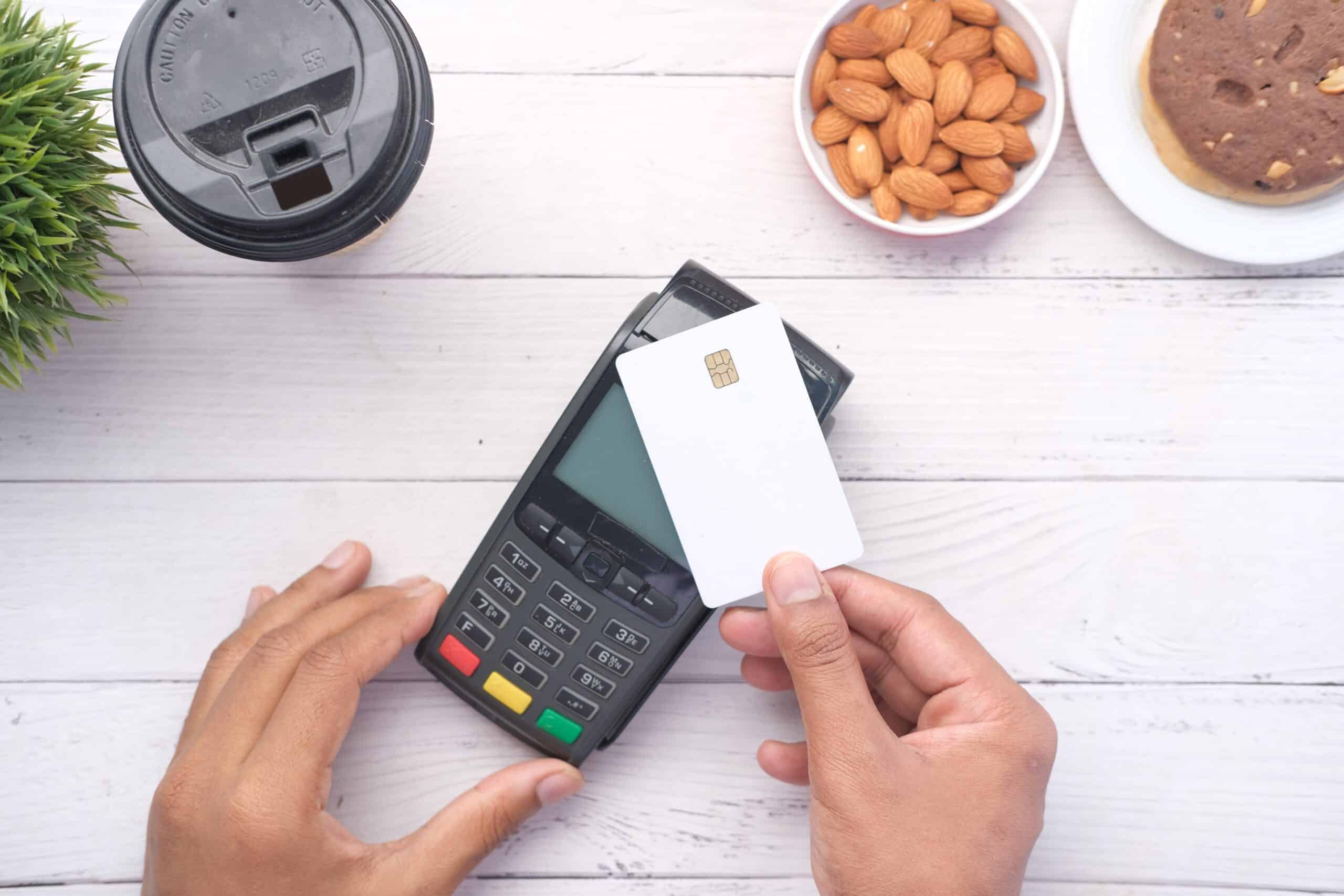There are six basic credit card transaction types that merchants will encounter as they do business. Generally, transactions are categorized by your payment processor automatically but it helps to know what the different types are. You’ll need to know how to process each kind with your Point-of-Sale (POS) system or online payment gateway. Getting it right the first time can decrease your risks of chargebacks.
Purchase
The most common credit card transaction type, a purchase (or sale) is a transaction in which the purchase amount is taken from the cardholder’s account and sent to the merchant’s account. Although it’s a pretty straightforward transaction, a purchase happens in multiple steps:
-
- The credit card information is gathered, either by swiping, inserting, or tapping the actual card on a machine or by manually entering the information online.
- Merchants send that credit card information along with the sale amount to their payment processor.
- The payment processor sends that transaction information to the card network.
- The card network then asks the bank that issued the credit card to approve the transaction for the requested amount.
- If approved, the merchant will receive an approval code from their payment processor.
While there are a lot of steps, this all happens in real-time, in a matter of seconds. Once approved, the merchant can complete the sale. Also known as “settlement,” the purchase is complete when funds have transferred from the cardholder’s account to the merchant’s account. This also happens automatically like the authorization process but it usually takes 24-48 hours. Timing depends on the card issuer and the payment processor.
Pre-Authorization
A pre-authorization is sort of like a purchase transaction but merchants stop at receiving the approval code. The funds aren’t actually taken from the card. Pre-authorizations are typically used by merchants who offer a product or service that a customer only pays for after using. It’s a way of ensuring that the card is valid and has enough funds for the purchase.
While the card hasn’t been charged, a hold is placed on the account’s funds for the transaction amount, if it’s known, or for an estimated amount if the exact total is not known.
An example you’ve probably encountered is the gas station. Before you can pump gas, you have to swipe your card even though the machine won’t actually charge your card until after you fill your tank. Hotels and car rental companies use a similar process, swiping the card at check-in or reservation even though the card won’t be charged until checkout.
Capture
This is the follow up transaction after a pre-authorization. When you finish pumping gas or check out of the hotel, the final amount of your purchase is officially “captured” or charged to your credit card. As a merchant, you’ll need to include the approval code generated during the pre-authorization when you complete the capture to establish that the two transactions are related.
Merchants should also note that the amount captured can’t be more than the amount that was put on hold. So if you’re using this transaction type and there’s a possibility that the final purchase amount could change, make sure to set the pre-authorization amount is based on the high-end estimate. You can always charge less than the pre-authorization amount if you need to. It’s also important to remember that holds typically expire after about seven days. If you haven’t completed the sale before the hold expires, you lose that guarantee that the funds are there.
Verification
Similar to a pre-authorization, a verification transaction doesn’t actually pull any money from the credit card. Instead, it’s just verifying that the card is valid and active. Unlike pre-authorization, there is no hold placed for a specific amount of funds in a verification. Typically, it’ll process similar to an actual purchase except that the purchase amount is $0 or a nominal amount that will get refunded to the cardholder.
As a cardholder, you might have encountered this when signing up for a subscription service or registering your card as a payment option for recurring services. It’s most often used online in card-not-present transactions to minimize the risk of fraud.
Refund
When a customer returns an item or requests a refund, merchants aren’t just paying the customer back. They’re reversing the original transaction. Refunds are used when that original transaction has already settled. Because the transaction had already settled, it usually takes a few days for a refund to process and show up on the customer’s credit card statement.
For merchants, a refund is essentially processed as a “negative” purchase. That is, the “purchase” amount is a negative amount rather than a positive.
Void
Similar to a refund, a void is used to reverse a transaction. The difference is that the transaction hasn’t settled yet. You’re basically cancelling a charge before it was even made. For cardholders, that means the purchase amount never left their account so there’s no processing delay as with refunds. For merchants, it means you get to avoid paying the interchange fees you would have otherwise paid.
Voids might happen if merchants enter the wrong amount or if the customer changes their mind shortly after making the purchase.
Although refunds and voided transactions are not a merchant’s favorite, processing these is far better than getting hit with a chargeback. While a high number of chargebacks can get a merchant flagged as high risk, a high number of refunds or voids won’t. Though, if you’re processing a lot of these credit card transaction types, you may need to look at what you can do differently to prevent them.
Avoid Chargebacks by Using the Right Credit Card Transaction Types
A chargeback is basically a forced refund. If a cardholder disputes a charge and merchants can’t provide proof that the transaction was legitimate, a card issuer will force the return of the funds from the merchant. Chargebacks come with extra fees and, if merchants rack up too many, it can be harder to find a payment processor and bank.
By knowing the transaction types and knowing how to process them on your POS or gateway, you can avoid chargebacks that occur due to merchant mistakes. Some of the most common mistakes merchants make include:
-
- Processing the same purchase more than once. Keep an eye out for duplicate transactions and try to void them before they settle.
-
- Processing a refund as a purchase. Essentially, if you forget to make the amount negative rather than positive, you can accidentally double-charge a customer rather than refunding them. Always review the refund before submitting it for approval.
-
- Processing a refund rather than a void transaction, or vice versa. The two are similar but slightly different transactions. If you’re not careful about picking the right type for the situation, issuers might notice that the transaction code doesn’t match the actual transaction. In other words, it might be labeled as a void even though it was a refund. This can result in an incorrect transaction chargeback.
Choosing a payment processor like National Processing can also help you avoid chargebacks by offering easy-to-use POS systems and gateways.





